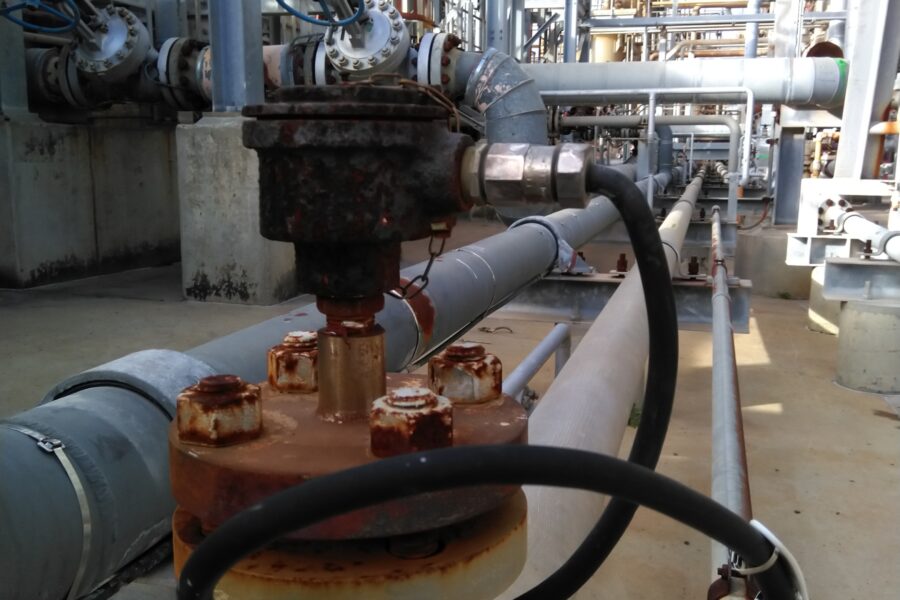Roar Solutions for Dummies
Roar Solutions for Dummies
Blog Article
Some Known Details About Roar Solutions
Table of ContentsWhat Does Roar Solutions Do?Unknown Facts About Roar SolutionsGetting The Roar Solutions To Work
In order to safeguard setups from a prospective surge an approach of evaluating and classifying a potentially harmful area is called for. The function of this is to make sure the correct choice and setup of equipment to inevitably prevent a surge and to ensure security of life.
(https://urlscan.io/result/8b06a2f1-9edb-4076-8512-31003b1bcc3a/)
No tools should be set up where the surface area temperature of the tools is higher than the ignition temperature of the offered hazard. Below are some usual dust hazardous and their minimum ignition temperature. Coal Dirt 380C 225C Polythene 420C (melts) Methyl Cellulose 420C 320C Starch 460C 435C Flour 490C 340C Sugar 490C 460C Grain Dirt 510C 300C Phenolic Material 530C > 450C Aluminium 590C > 450C PVC 700C > 450C Soot 810C 570C The possibility of the risk being present in a concentration high adequate to trigger an ignition will certainly vary from location to area.
Harmful location electric equipment possibly created for use in greater ambient temperatures. Area Repair By Authorised Employee: Challenging testing might not be called for however specific procedures may need to be complied with in order for the devices to keep its 3rd celebration ranking. Each piece of tools with an unsafe ranking must be examined individually.
How Roar Solutions can Save You Time, Stress, and Money.
The tools register is a comprehensive data source of equipment records that includes a minimum set of fields to recognize each item's place, technical criteria, Ex-spouse classification, age, and environmental data. This details is vital for tracking and managing the devices properly within hazardous locations. On the other hand, for regular or RBI tasting assessments, the quality will be a mix of Thorough and Close evaluations. The ratio of Thorough to Shut inspections will be established by the Equipment Threat, which is evaluated based upon ignition threat (the chance of a resource of ignition versus the likelihood of a flammable environment )and the harmful area classification
( Area 0, 1, or 2). This variant will also influence the resourcing requirements for work preparation. Once Whole lots are defined, you can develop sampling plans based on the sample size of each Great deal, which describes the variety of arbitrary equipment products to be evaluated. To establish the required example dimension, 2 aspects require to be examined: the dimension of the Great deal and the classification of inspection, which indicates the degree of effort that need to be applied( decreased, regular, or boosted )to the evaluation of the Lot. By incorporating the category of inspection with the Whole lot dimension, you can then develop the appropriate being rejected criteria for a sample, meaning the allowed variety of defective items located within that sample. For more details on this procedure, please refer to the Power Institute Guidelines. The IEC 60079 standard advises that the maximum period between inspections ought to not go beyond 3 years. EEHA examinations will also be performed outside of RBI projects as part of arranged upkeep and devices overhauls or repairs. These examinations can be attributed toward the RBI sample dimensions within the affected Great deals. EEHA assessments are conducted to determine mistakes in electrical tools. A weighted racking up system is essential, as a single item of devices may have several faults, each with differing levels of ignition threat. If the combined rating of both inspections is less than twice the mistake score, the Great deal is regarded appropriate. If the Lot is still taken into consideration undesirable, it must go through a complete evaluation or justification, which might trigger stricter evaluation protocols. Accepted Whole lot: The sources of any faults are determined. If a common failing mode is discovered, extra tools may require maintenance. Faults are classified by extent( Safety, Stability, Housekeeping ), ensuring that immediate problems are analyzed and resolved promptly to alleviate any kind of influence on safety and security or operations. The EEHA data source should track and videotape the lifecycle of mistakes in addition to the restorative activities taken. Carrying out a durable Risk-Based Evaluation( RBI )strategy is crucial for making certain compliance and safety in managing Electric Tools in Hazardous Areas( EEHA) (Roar Solutions). Automated Mistake Rating and Lifecycle Administration: Easily manage mistakes and track their lifecycle to enhance examination precision. The intro of this assistance for risk-based inspection even more strengthens Inspectivity's setting as a best-in-class solution for governing compliance, as well as for any kind of asset-centric evaluation usage situation. If you have an interest in finding out more, we invite you to request a demonstration and find exactly how our option can change your EEHA monitoring processes.
4 Simple Techniques For Roar Solutions

In regards to explosive threat, a hazardous area is a setting in which an explosive environment exists (or may be expected to be present) in amounts that require unique safety measures for the building and construction, setup and usage of devices. Roar Solutions. In this post we explore the challenges faced in the workplace, the danger control steps, and the required competencies to work securely
It issues of contemporary life that we make, store or deal with a series of gases or liquids that are regarded combustible, and a variety of dirts that are deemed combustible. These substances can, in specific conditions, develop eruptive ambiences and these can have major and tragic repercussions. Many of us are familiar with the fire triangle eliminate any kind of among the three aspects and the fire can not take place, yet what does this mean in the context of hazardous locations? When breaking this down right into its most basic terms it is basically: a mix of a specific amount of release or leak of a particular material or product, mixing with ambient oxygen, and the presence of a resource of ignition.
In the majority of circumstances, we can do little about the levels of oxygen in the air, however we can have substantial influence on sources of ignition, as an example electrical devices. Dangerous locations are recorded on the harmful area category drawing and are recognized on-site by the triangular "EX LOVER" indicator. Below, official site among various other crucial information, areas are divided right into 3 kinds relying on the risk, the possibility and duration that an explosive ambience will exist; Zone 0 or 20 is regarded the most hazardous and Zone 2 or 22 is deemed the least.
Report this page